How to open a port in the firewall on CentOS or RHEL
Last updated on November 30, 2020 by Dan Nanni
Out of the box, enterprise Linux distributions such as CentOS or RHEL come with a powerful firewall built-in, and their default firewall rules are pretty restrictive. Thus if you install any custom services (e.g., web server, NFS, Samba), chances are their traffic will be blocked by the firewall rules. You need to open up necessary ports on the firewall to allow their traffic.
On CentOS/RHEL 6 or earlier, the iptables service allows users to interact with netfilter kernel modules to configure firewall rules in the user space. Starting with CentOS/RHEL 7, however, a new userland interface called firewalld has been introduced to replace iptables service.
To check the current firewall rules, use this command:
$ sudo iptables -L
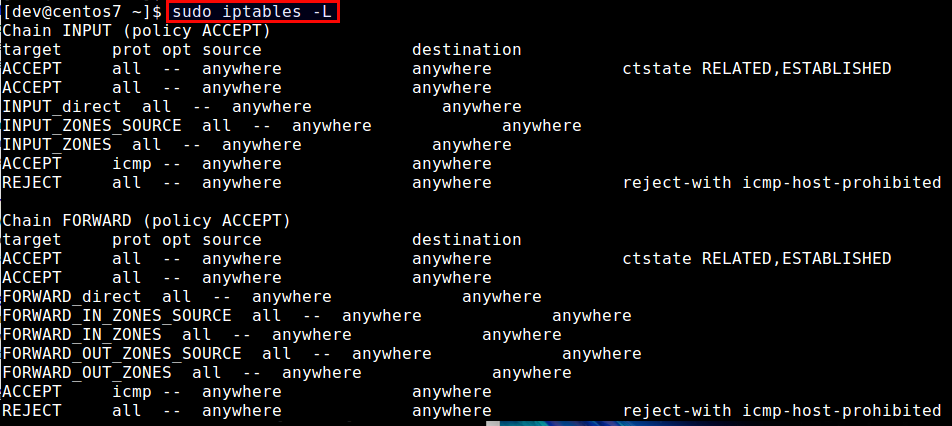
Now let's see how we can update the firewall to open a port on CentOS/RHEL.
Open a Port on CentOS/RHEL 7 or Later
Starting with CentOS and RHEL 7, firewall rule settings are managed by firewalld service daemon. A command-line client called firewall-cmd can talk to this daemon to update firewall rules permanently.
To open up a new port (e.g., TCP/80) permanently, use these commands.
$ sudo firewall-cmd --zone=public --add-port=80/tcp --permanent $ sudo firewall-cmd --reload
Without --permanent flag, the firewall rule would not persist across reboots.
Check the updated rules with:
$ firewall-cmd --list-all
Open a Port on CentOS/RHEL 6 or Earlier
On CentOS/RHEL 6 or earlier, the iptables service is responsible for maintaining firewall rules.
Use iptables command to open up a new TCP/UDP port in the firewall. To save the updated rule permanently, you need the second command.
$ sudo iptables -I INPUT -p tcp -m tcp --dport 80 -j ACCEPT $ sudo service iptables save
Another way to open up a port on CentOS/RHEL 6 is to use a terminal-user interface (TUI) firewall client, named system-config-firewall-tui.
$ sudo system-config-firewall-tui
Choose Customize button in the middle and press ENTER.
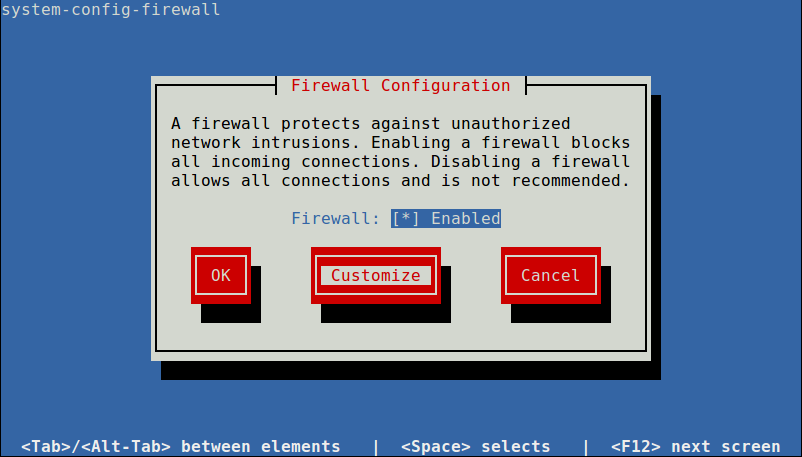
If you are trying to update the firewall for any well-known service (e.g., web server), you can easily enable the firewall for the service here, and close the tool. If you are trying to open up any arbitrary TCP/UDP port, choose Forward button and go to a next window.
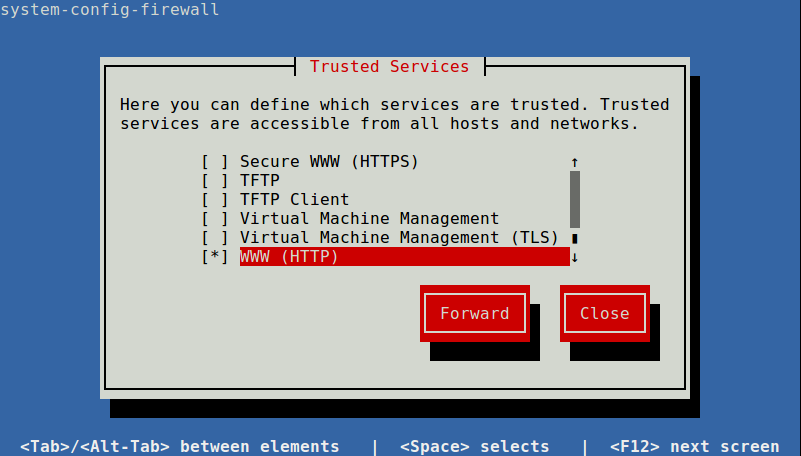
Add a new rule by choosing Add button.
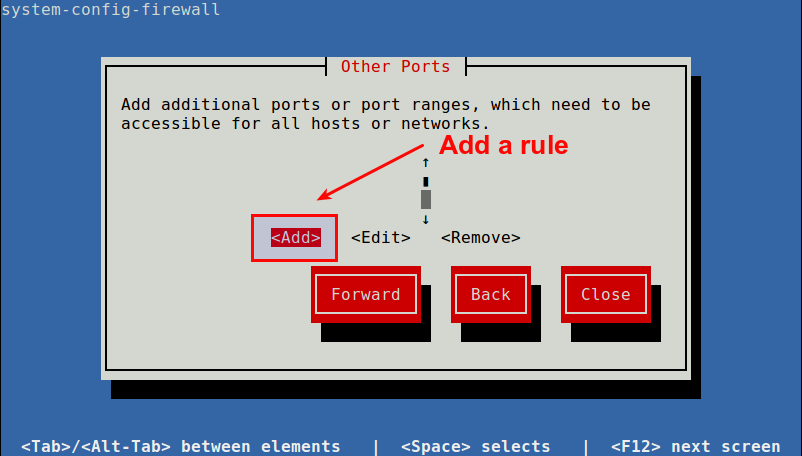
Specify a port (e.g., 80) or port range (e.g., 3000-3030), and protocol (e.g., tcp or udp).
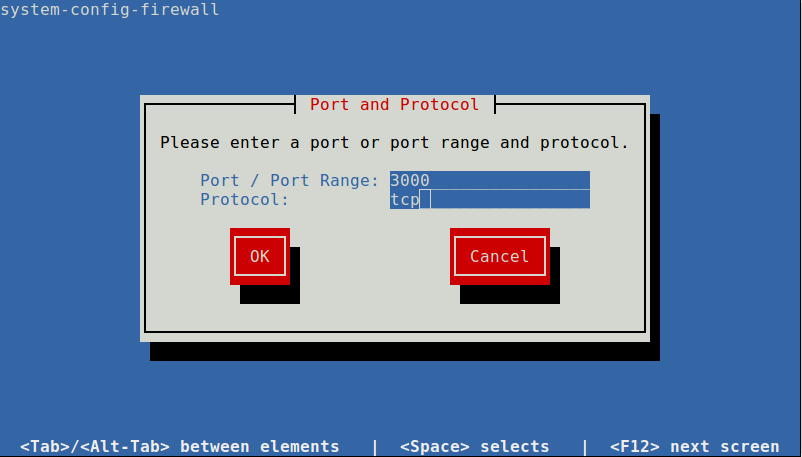
Finally, save the updated configuration, and close the tool. At this point, the firewall will be saved permanently.
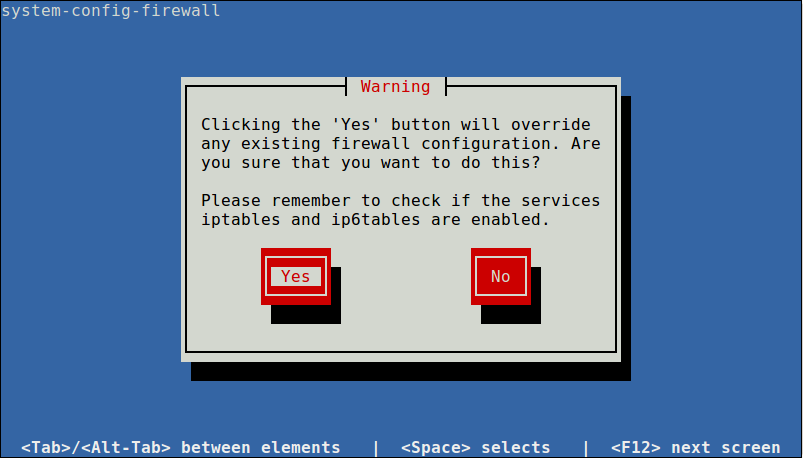
Support Xmodulo
This website is made possible by minimal ads and your gracious donation via PayPal or credit card
Please note that this article is published by Xmodulo.com under a Creative Commons Attribution-ShareAlike 3.0 Unported License. If you would like to use the whole or any part of this article, you need to cite this web page at Xmodulo.com as the original source.
Xmodulo © 2021 ‒ About ‒ Write for Us ‒ Feed ‒ Powered by DigitalOcean

